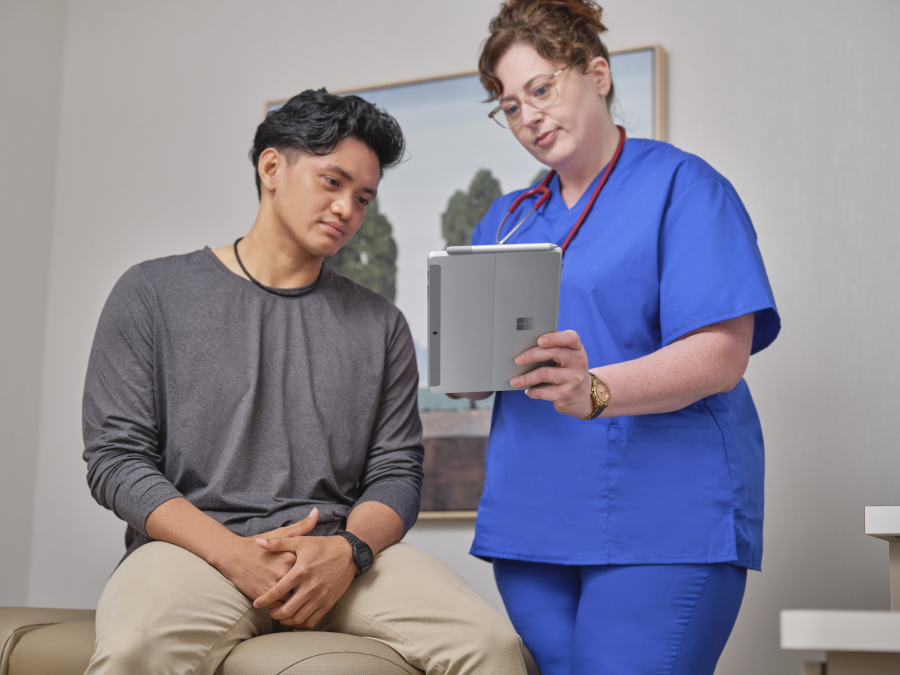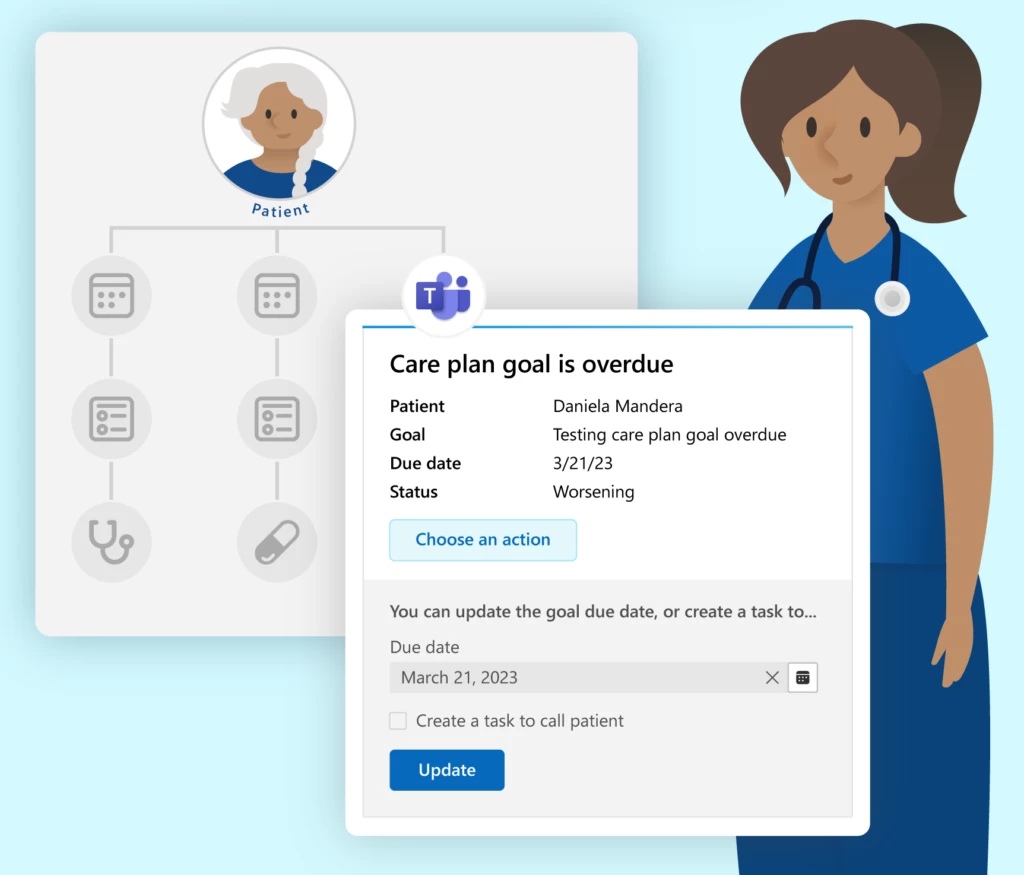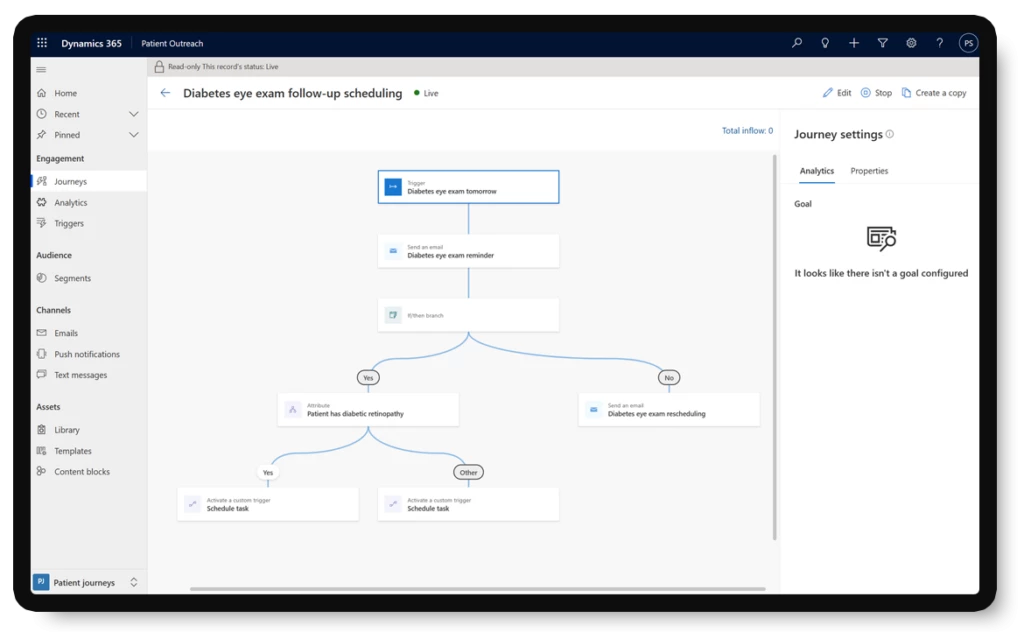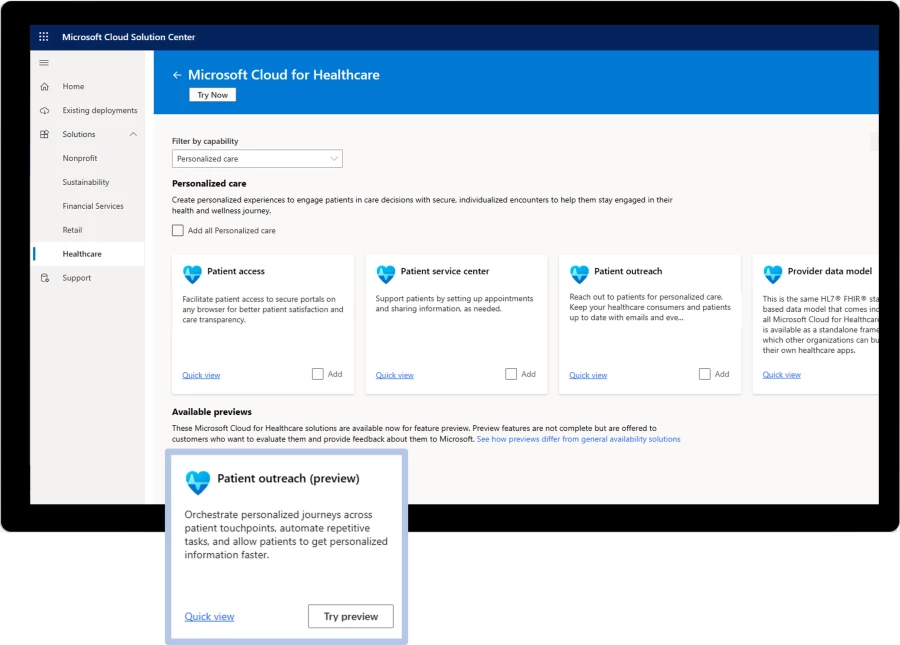
Discover how to enhance the patient experience with patient journeys
Microsoft Cloud for Healthcare provides trusted, integrated capabilities that make it easier for health organizations to improve the patient’s experience. The series of experiences and interactions that a patient has with a healthcare organization, from initial contact to post-treatment follow-up, can be described as patient journeys. For health organizations, understanding patient journeys is crucial to their success. By understanding and optimizing each touchpoint in a patient’s experience, providers can improve patient satisfaction, retention, and loyalty, while payors can address efficiencies and the return on investment of their health plans. The ability to effectively map and analyze patient journeys is becoming increasingly important in the competitive healthcare landscape. Patients have more options and are seeking more personalized care; healthcare organizations can differentiate themselves in how they understand and address the patient journey to provide improved, holistic care.
As part of our ongoing commitment to enhancing patient engagement, we recently updated our Patient Outreach solution to include patient journeys.
Reach out to patients for personalized care
Engage in patient care decisions with personalized patient engagement solutions.

Personalized patient journeys
Patient journey application (preview) enables healthcare organizations to orchestrate personalized journeys across patient touchpoints to automate repetitive tasks and allow patients to get personalized care faster. The patient journey feature extends the customer journey orchestration engine from Microsoft Dynamic 365 Marketing to support more than just outreach specialist.
Providers can orchestrate actions and information flow across multiple touchpoints and people. Interacting with patients throughout their journey removes the disconnect patients often feel while interacting with different people in the healthcare organizations. By automating repetitive tasks, patient journey frees up time and resources, allowing healthcare providers to better focus on delivering the best possible care to patients and allows patients to receive personalized tasks and actions for care from their caregivers, faster. Improving patient experiences is associated with improved clinical outcomes, reduced malpractice risks and greater employee satisfaction, reducing turnover.1
The first step in understanding patient journeys is to map out the various touchpoints that patients have with your organization. This can include everything from online research to scheduling appointments, from medical procedures to post-treatment follow-up. By identifying these touchpoints, healthcare organizations can pinpoint areas for improvement and ensure that patients have a seamless experience at every stage of their journey.
Once touchpoints have been identified, healthcare providers and payors can use patient and member feedback and data to optimize each interaction. By understanding the patient journey, healthcare organizations can optimize their services and tailor their efforts to attract and retain patients and members.
To enhance patient journeys, new additions to Microsoft Cloud for Healthcare include:
- Trigger-based journeys: The addition of trigger-based journeys in the Patient outreach solution will enhance the system’s ability to respond quickly to patient interaction and changes. By initiating journeys based on specific events, such as the patient being discharged from the hospital or finished being checked in, organizations can streamline their processes and improve their overall responsiveness and ensure patients’ get personalized information quickly.
- New ways to connect and surface: The integration with Microsoft Cloud for Healthcare and Microsoft applications allows for a seamless experience. Providers and payors now have the ability to send messages through Microsoft Teams, surface to-dos in the patient interaction timeline, and allow for secure messaging through Patient Access Portal. The Patient journey feature extends communication channels beyond email to include text messaging and push notifications.

- Sample journeys: We bring all these new capabilities to life by providing ready-to-use sample patient journeys, tailored to common healthcare scenarios. This sample data will showcase our new feature set and highlight what can be achieved with patient journeys.
- Patient discharge: The purpose of this journey is to make sure patients get their post-discharge information by looking at the risk factors and communication preferences. This reduces workload from the contact center so they can focus on high-risk patients and automating communication for others.
- Care plan goal overdue: Notify the patient that they have a care plan goal that is overdue so that they can get back on track.
- Initial pregnancy appointment/Pregnancy appointment and education: Remind patients who are pregnant about their appointments and provide them with educational material.
- Annual diabetes eye exam/Diabetes eye exam follow-up scheduling: Remind diabetic patients about their annual eye exam and then automate tasks based off the results of the appointment.
- Teams message for overdue care plan goal: The goal of this journey is to notify a care manager that their patient has an overdue care plan goal. It will then allow the care manager to either update the care plan goal due date or add a task for themself to follow up with the patient.

Implementing patient journey solutions in healthcare organizations can greatly improve patient outcomes and satisfaction. The sample patient journeys serve as accelerator templates that can be easily customized based on specific organizational needs. With the growing demand for patient-centric care, patient journey solutions will be a key factor in ensuring the success of healthcare organizations in the future.
“The Patient journey feature is remarkably effective. It enables us to personalize outreach to specific cohorts at specific touchpoints and better communicate key messages to patients. We can send a series of customized messages about everything from E-visits and virtual care to appointments and treatment specific follow-up. The Patient journey feature and included sample data is a game changer for us and our customers.”—Deepak Goyal, Partner, Provider Customer Transformation, PwC
Try the Patient journey application preview
Existing Microsoft Cloud for Healthcare customers can sign up now in Solution Center to try our preview. New features are available in the preview section of Patient outreach solution, under the personalized care capabilities card.

Learn more
- Explore the provided sample patient journeys or follow this step-by-step guide to learn how to Create a simple patient journey.
- Read how to configure patient journey (preview).




